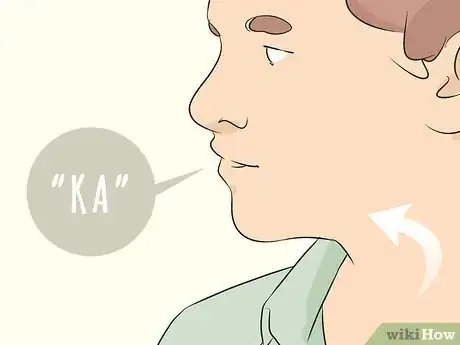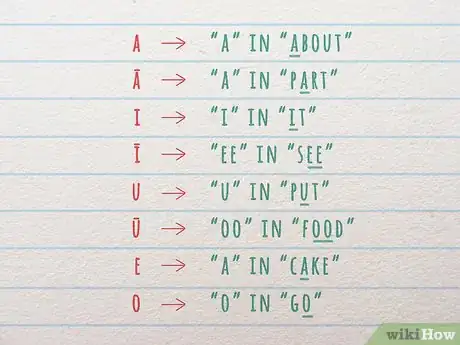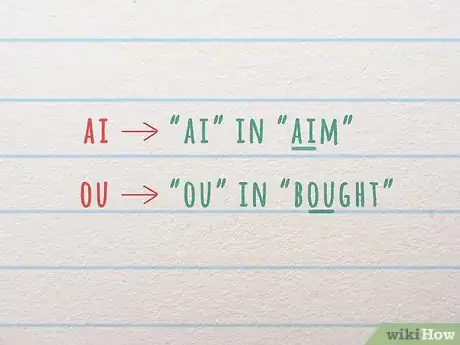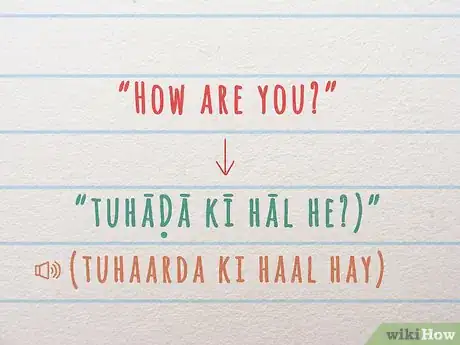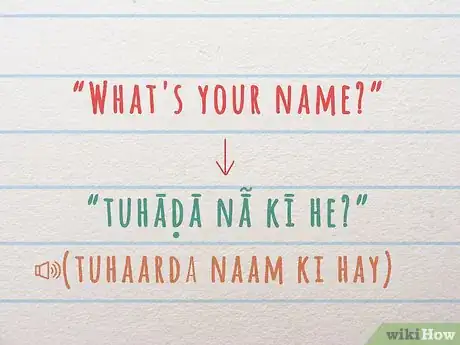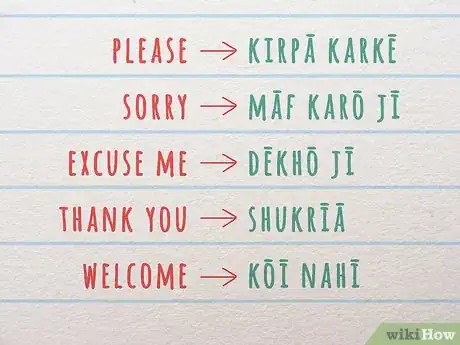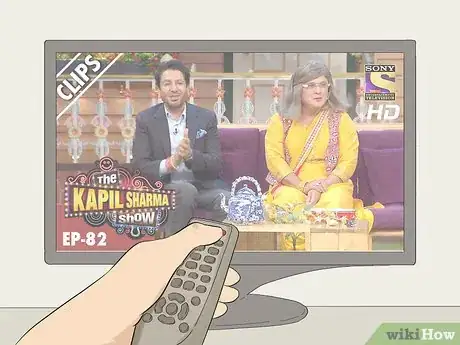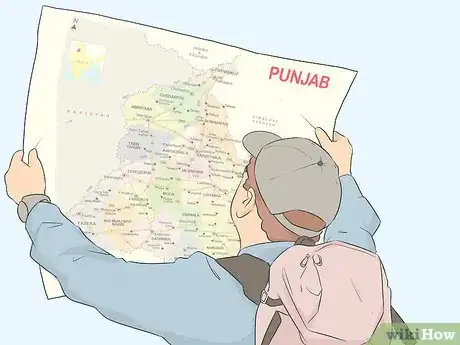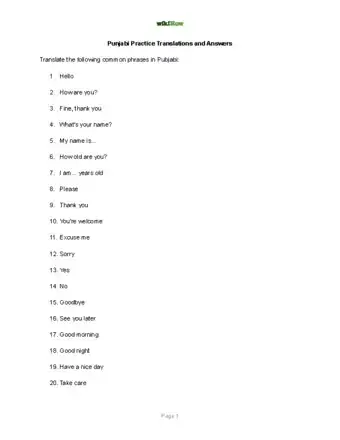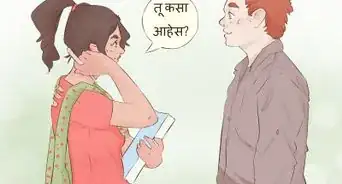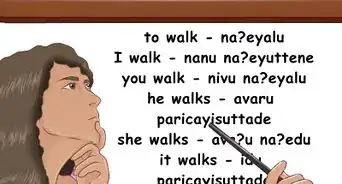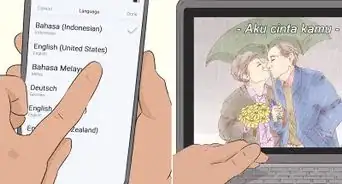This article was co-authored by Tian Zhou and by wikiHow staff writer, Jennifer Mueller, JD. Tian Zhou is a Language Specialist and the Founder of Sishu Mandarin, a Chinese Language School in the New York metropolitan area. Tian holds a Bachelor's Degree in Teaching Chinese as a Foreign Language (CFL) from Sun Yat-sen University and a Master of Arts in Teaching English to Speakers of Other Languages (TESOL) from New York University. Tian also holds a certification in Foreign Language (&ESL) - Mandarin (7-12) from New York State and certifications in Test for English Majors and Putonghua Proficiency Test from The Ministry of Education of the People's Republic of China. He is the host of MandarinPod, an advanced Chinese language learning podcast.
There are 16 references cited in this article, which can be found at the bottom of the page.
This article has been viewed 90,269 times.
Punjabi is spoken by more than 120 million people in India, Pakistan, and around the world. It is the language of the Sikh religion. The language is written in two different scripts. The majority of Punjabi-speakers read and write using the Gurmukhi script, which was developed by the second Sikh guru, Sri Guru Angad Dev Ji Maharaj. Punjabi-speakers in Pakistan read and write using the Shahmukhi script, which is a version of the Urdu script. However, the words are pronounced the same regardless of which script they're written in. If you want to learn to speak Punjabi, start by mastering the pronunciation of the different sounds, many of which are nonexistent in English. Then you can start having basic conversations and learning more about the language.[1]
Steps
Pronouncing the Punjabi Alphabet
-
1Start with the consonants that are pronounced the same as in English. There are several consonants in the Punjabi alphabet that are pronounced the same as their English counterparts (even though they're represented differently in Punjabi script). Get these out of the way using romanized letters so you don't have to worry about them. If you know English, you already know how to pronounce these letters.[2]
- Use an alphabet list, such as the one at http://mylanguages.org/punjabi_alphabet.php, to help you pronounce the letters of the alphabet. There's also a printable table of the Gurmukhi script available at https://www.sikhnet.com/files/images/2011/Gurmukhi-Alphabet.jpg.
- Note that some letters sound like their English counterpart, but are more limited. For example, the Punjabi consonant that makes the "g" sound only makes a hard "g," as in the English word "gate," never a soft "g," as in the English word "gene."
Tip: Although there are two scripts for Punjabi, the letters are all pronounced the same way. It doesn't matter which script you choose as long as you are consistent.
-
2Control your breath to practice aspirated consonants. Punjabi has a number of aspirated consonants, represented in romanized text with an "h" after the consonant. This indicates that you should release a short puff of air as you make the sound of the consonant.[3]
- Some of these letters are represented in romanized text as "dh" and "kh."
- There are some consonant blends, such as "ch," "sh," and "th," that sound much as the same as they would in English, except they're slightly aspirated. For example, the "th" sound comes out sounding more like the "th" in the English word "Thames" or the country name "Thailand."
Tip: To pronounce these consonants, make a "ha" sound in the back of your throat at the same time you pronounce the consonant sound.
Advertisement -
3Work on consonant sounds that don't exist in English. There are also Punjabi consonants that require a sound that doesn't exist in English at all. To produce these sounds, you make the sound you would expect to make in English, but with your tongue in a different part of your mouth. This takes some practice to get used to.[4]
- For example, there's a "ch" sound that you make by touching your tongue to the back of your front teeth while saying the "ch" sound. In Gurmukhi script, this letter looks like "ਛ."
- For the letter "ਕ਼," make a sound like a "k" in English, but produce the sound from your throat rather than from your mouth.
-
4Add Punjabi vowels. Punjabi vowels sometimes occur alone but are also produced in script as diacritical marks occurring above, beside, and below the consonant. There are 10 vowel sounds in Punjabi: 8 vowels and 2 diphthongs. In romanized Punjabi, these vowels are represented and pronounced as follows:[5]
- "a" sounds like the "a" in the English word "about"
- "ā" sounds like the "a" in the English word "part"
- "i" sounds like the "i" in the English word "it"
- "ī" sounds like the "ee" in the English word "see"
- "u" sounds like the "u" in the English word "put"
- "ū" sounds like the "oo" in the English word "food"
- "e" sounds like the "a" in the English word "cake"
- "o" sounds like the "o" in the English word "go"
-
5Include the 2 Punjabi diphthongs. "Diphthongs" are vowels that combine together to produce a new sound. In Punjabi, you only have 2 diphthongs to learn. Their sounds aren't far off from sounds you're already familiar with in English. Those two diphthongs as represented in romanized text are:[6]
- "ai," which sounds like the "ai" in the English word "aim"
- "au," which sounds like the "ou" in the English word "bought"
Starting Basic Conversations
-
1Greet people with "sat srī akāl." "Sat srī akāl" is a general greeting in Punjabi, and can be used to greet anyone regardless of their age or gender. Another common greeting in Punjabi is "namaskar."[7]
-
2Say "tuhāḍā kī hāl he?" if you want to ask how someone is doing. After greeting someone, it's common to ask how they're doing. In Punjabi, the question to ask is "tuhāḍā kī hāl he?"[8]
- If you asked first, the other person will likely say "ṭīk hā̃. tusī̃ kíddā̃?" which means "I'm fine, and you?" You would respond simply "ṭīk hā̃."
-
3Ask someone their name by saying "tuhāḍā nā̃ kī he?" If you want to start a conversation with someone, the first thing you'll likely want to do is make introductions. Start by saying "mērā nā̃," followed by your name, then the word "he." Then you can ask the other person what their name is by saying "tuhāḍā nā̃ kī he?"[9]
- If the other person asks your name first, simply tell them your name and then repeat the question in full to ask them theirs.
Tip: If you want to say something to the effect of "pleased to meet you," you might say "tuhānū̃ mil kē bāhut khushī hōī." However, this sort of sentiment is not commonly expressed in Punjabi.
-
4Speak politely and respectfully. In Punjabi, as in any language, you'll be treated more kindly by people you meet if you use your manners by including polite words and phrases in your speech. These are especially important if you're asking someone a question or asking them to help you. Some important polite words and phrases in Punjabi are:[10]
- "kirpā karkē" (please)
- "kimā" or "māf karō jī" (sorry)
- "vēkhō jī" or "dēkhō jī" (excuse me)
- "tànvād" or "shukrīā" (thank you)
- "tuhāɖā suāgat he" or "kōī nahī̃" (you're welcome; reply to thank you)
Immersing Yourself in the Language
-
1Listen to Punjabi music whenever you have the opportunity. Music is a good way to learn any language because the rhythm and repetitiveness of the lyrics help you remember the words and phrases you learn. Search for Punjabi music online or on your favorite music streaming service.[11]
- For example, you could listen to Punjabi music while you were doing chores, or during your commute to work or school.
Tip: If you find a song you really like, search for the lyrics in Punjabi. Try to follow along with the lyrics as you listen to the song. This can help improve your reading skills.
-
2Watch movies and television in Punjabi. Search your favorite video streaming service or website for Punjabi videos that you can watch. News programs and unscripted shows are typically better if you want to get an idea of how normal people use the language to have normal conversations.[12]
- Scripted shows and movies can help you pick up additional vocabulary, especially if you want to be able to converse about a particular topic.
- Turn subtitles off when watching Punjabi movies and television shows. If you have them on, you'll be concentrating on reading the subtitles rather than listening to the speakers. Pay attention and try to understand what they're saying from the surrounding context.
-
3Find a native speaker locally or online to practice with you. Having a conversation with a native speaker allows you to get feedback on your word choice and pronunciation in real-time. If you live near a Punjabi-speaking community, you may be able to find someone nearby who is willing to practice the language with you. Otherwise, you can find a conversation partner online.[13]
- There are many websites, such as Conversation Exchange (https://www.conversationexchange.com/), where you can connect with a native speaker to practice your Punjabi for free. Other sites offer similar services but may charge a subscription fee for you to use the site. #*On some sites, such as iTalki, you can find a professional tutor who will work with you to help you improve your speaking skills. These tutors charge their own rates, although most are less than $10 USD an hour.[14]
Tip: If you start working with a conversation partner online, safeguard your privacy. Don't give them any personal information about yourself or your family.
-
4Take an immersion course if possible. Language schools, colleges, and universities throughout the world offer immersion programs. Many have programs in Punjabi, especially schools located in regions with large numbers of Punjabi-speaking immigrants.[15]
- Many of these courses are several weeks long, but you may also be able to find programs that only last a few days.
- The prices for these courses varies widely depending on the length of the program, the institution offering it, and the location where it is offered. You could pay anywhere from a few hundred to a few thousand dollars.
-
5Travel to the Punjab region in India or Pakistan. The Punjab region is a safe, tourist-friendly place to travel if you want to fully immerse yourself in the Punjabi language. In this region, you can practice your Punjabi-speaking skills with native speakers simply by striking up a conversation in the marketplace or at a café.[16]
- Many of the region's top tourist attractions are steeped in religious and cultural history. This is also a good place to visit if you are interested in the Sikh religion.
- Flashcards are very helpful for learning a new language.[17]
- You can write down the words that appear most frequently or the ones you think are most important.[18]
- You don't have to memorize every single word you don't know. Try to tackle 20-50 words per lesson, day, or week.
Practice Translations and Answers
Community Q&A
-
QuestionHow can I learn a Punjabi language for Urdu speaking persons?
 Ali ImranCommunity AnswerYou can watch videos on YouTube, though they might teach you in standard Punjabi which is the easiest Punjabi and understandable by any Urdu-Hindi speaking person. Otherwise, if you like to learn dialects you need a native.
Ali ImranCommunity AnswerYou can watch videos on YouTube, though they might teach you in standard Punjabi which is the easiest Punjabi and understandable by any Urdu-Hindi speaking person. Otherwise, if you like to learn dialects you need a native.
References
- ↑ https://www.omniglot.com/writing/punjabi.htm
- ↑ http://mylanguages.org/punjabi_alphabet.php
- ↑ https://www.learnesl.net/what-is-aspiration-in-pronunciation/
- ↑ https://www.learnentry.com/english-to-punjabi/punjabi-alphabet/
- ↑ http://www.learnpunjabi.org/intro1.html
- ↑ https://blogs.kent.ac.uk/baap/files/2018/03/BAAP-2018_Rehman.pdf
- ↑ https://www.omniglot.com/language/phrases/punjabi.php
- ↑ https://www.learnentry.com/english-punjabi/vocabulary/greeting-in-punjabi/
- ↑ https://www.omniglot.com/language/phrases/punjabi.php
- ↑ https://www.omniglot.com/language/phrases/punjabi.php
- ↑ https://www.mosalingua.com/en/how-to-learn-a-language-with-music-in-5-steps/
- ↑ https://www.fluentu.com/blog/how-to-learn-a-language-by-watching-movies/
- ↑ https://www.linguasorb.com/blog/10-best-language-exchange-sites
- ↑ https://www.italki.com/teachers/punjabi?is_native=1
- ↑ https://www.languages-vancouver.com/punjabi/
- ↑ https://www.lonelyplanet.com/india/punjab-and-haryana/punjab
- ↑ https://flashcardsandstationery.com/learning-a-language-with-flashcards/
- ↑ https://www.fluentu.com/blog/best-foreign-language-learning-flashcards-apps/


